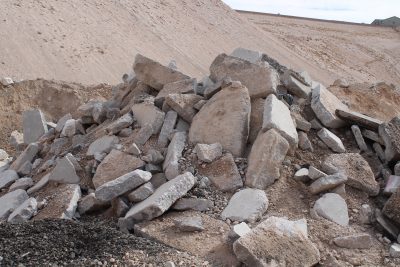
Features
Aggregates
Education
Pits & Quarries
Crucial bill tabled in response to Alexis vs. Alberta decision
July 10, 2020 By Jay Koblun

Jason Nixon, Alberta Environment and Parks Minister and member of the legislative assembly, tabled Bill 31 for first reading in the Alberta Legislature in response to recommendations from the Alberta Sand and Gravel Association (ASGA).
“When papers are tabled, in the parliamentary sense, it means a document has been laid on the table in chambers and means it will be noticed or considered,” said John Ashton, executive director of ASGA.
Ashton sent Nixon recommendations on behalf of ASGA in June, just six weeks ago, summing up the associations concerns of a ruling provided by the Alberta Court of Appeal affecting sand and gravel pits. The ruling was given in relation to the Big Molly frac sand operation in Lac Ste. Anne County.
“The decision means that under the Environmental Protection & Enhancement Act (EPEA), there is a strong possibility that gravel pits would have to be considered quarries, instead of having its own classification. Based on the ruling, any new sand and gravel applications to Alberta Environment & Parks could be evaluated as a quarry. Quarries producing more than 45,000/tonnes per year are required to complete an Environmental Impact Assessment (EIA),” ASGA stated.
According to ASGA, EIA’s are typically reserved for large resource projects, not sand and gravel pits. Regulation and policy on a modified EIA process for gravel pits would take significant time to develop and adversely affect the industry. For full details on the recommendations visit, asga.ab.ca.
Bill 31 does three things:
- It makes clear that aggregates are explicitly part of the EPEA.
- It makes clear that a pit is a place where aggregate extraction takes place in the EPEA.
- It removes references to “silica sand” from the Public Lands Act as a redundant term.
Ashton said the tabled Bill 33 is an unprecedented achievement for ASGA to have spurred legislation in just six weeks, but there is still work to be done to create a permitting system that protects Alberta’s crucial ecosystems and meets the province’s demand for gravel.
“The court decision stalled and froze 500 industry applications, essentially stopping work in those areas,” said Ashton. “Bill 31 essentially returns us to the normal the industry had before May—and that system was already very imperfect. It wasn’t serving us or protecting the environment in a timely fashion, nor serving the purpose of making sure applications were getting processed in a timely fashion. This returns us to the position of waiting,” he said.
To view update on the Alexis v Alberta court decision visit, asga.ab.ca
Print this page